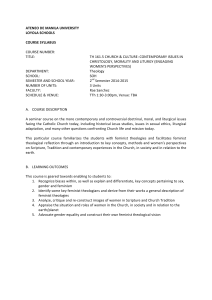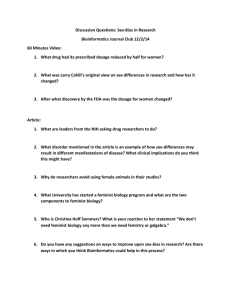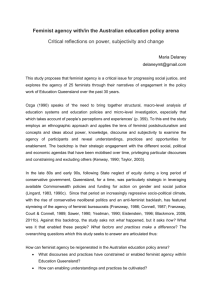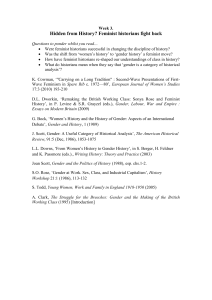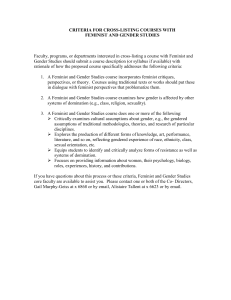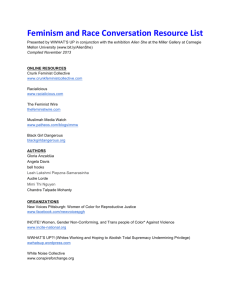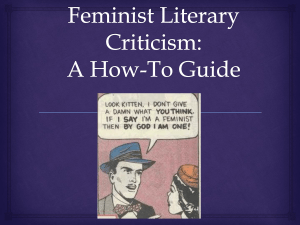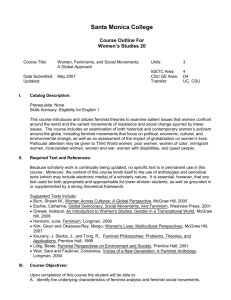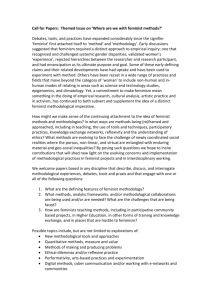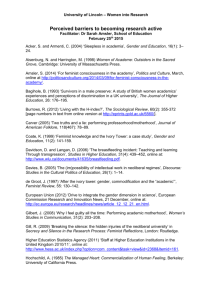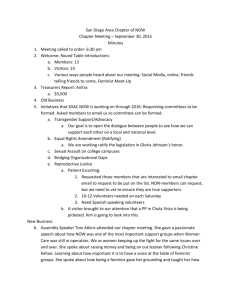Women and homosexuals in war (primarily in the Canadian Armed
advertisement
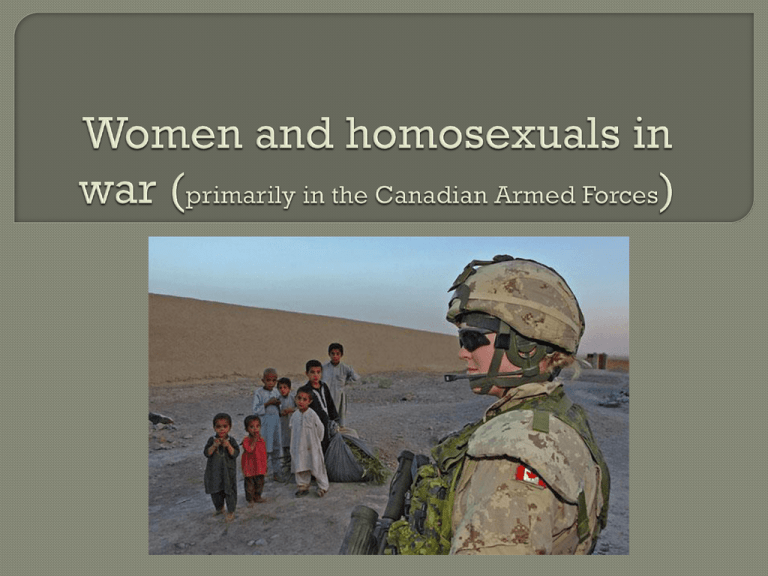
For Women World War I World War II Post World War Today II For Gays, Lesbians, etc… May 1967 1988 1992 Today Sociology • Feminist Psychology • Military Gay head priest shows how far Canadian Military has come Highest rank/position achieved by non-commissioned women Institutional policies and practices Vs. Individual policies and practices Gender reassignment Same-sex Equal benefits rights for women A major branch of the study of gender roles in war is the study of how gender roles and expectations on both genders changed War fought on a scale never previously seen, which initiated massive social change, contributing to the beginning of modern feminist movements Strict conservative morality prevailed, in form of Victorian values Women seen as housekeepers whose primary role was caring for their children Men seen as primary financial support and also as the backbone of military By 1914, about 5 of 23 million women were employed, acting as secretaries, teachers, etc. International tension exploded into huge conflict on unprecedented scale, with over 65 million soldiers participating worldwide, including 5 million Americans and 12 million British soldiers; women deployed exclusively as nurses Millions of soldiers were drawn away from jobs, and need for war supplies also drastically increased, leading to gaps in the economy which were filled by women Women entering into industrial factories and munitions factories to work – places usually reserved for men Also took traditional male jobs such as in police force (top picture) After the war, due to the economic support women provided, suffrage movements gained traction and many countries gave women right to vote A war even more enormous in scale than World War 1, it involved every level of society in a ‘total war’ against the country’s respective opponents As such, cultural perceptions of female work during the war shifted from being replacements to being active supporters of struggle against Hitler’s forces Females made up 17% of industrial work force prior to the war, rising to almost 30% after it Women revered as war heroes much like men, having formed backbone that made military action possible with their work Women were able to fulfill roles traditionally assigned to men and show their aptitude in these positions Society shifted back with men regaining most of their roles These changes, however, provided some of the ammunition (terrible pun) for the blossoming feminist movement Women had shown their abilities, making society more open to the feminist agenda ‘Rosie the Riveter’ Gender roles in war, while often preventing women from fighting alongside men, also prevented men from staying at home and fulfilling labour roles, holding men responsible for fighting for their country on the front line Men who did not fight were typically perceived as unpatriotic and cowardly Seen as abusing the sacrifices their fellow men were making at war Due to increase in female presence in war, it is likely this attitude has blunted significantly; however, since no conflicts on this scale have occurred recently, it is difficult to measure how much this has changed since the military is still male-centric in image... Modern military ads https://www.youtube.com/watch?v=GlzdZq SVbJ4 https://www.youtube.com/watch?v=cqZVIZJaI8 These cultural changes can be interpreted in various intellectual frameworks Structural materialism sees women working as solution to practical problems created by absence of male workers during war Functionalism recognizes that military is not independent institution but is supported by other institutions that had to be run by women in absence of men Behaviourists may view this as people becoming accustomed to idea of women working as a social norm due to exposure and propaganda The situation of women during the two wars led to serious social changes that eventually led to modern feminist movements and contributed to a higher level of social equality






